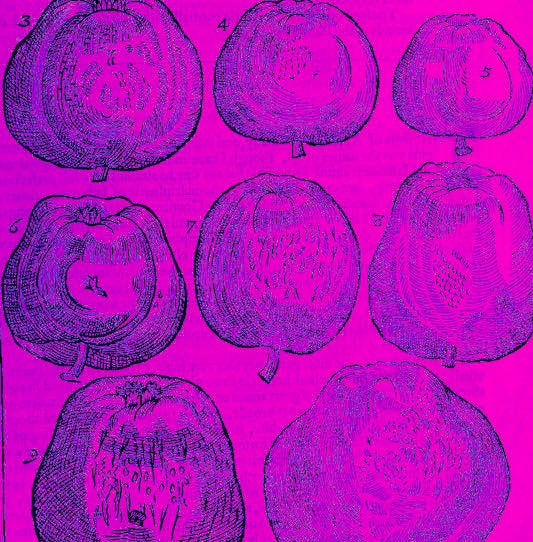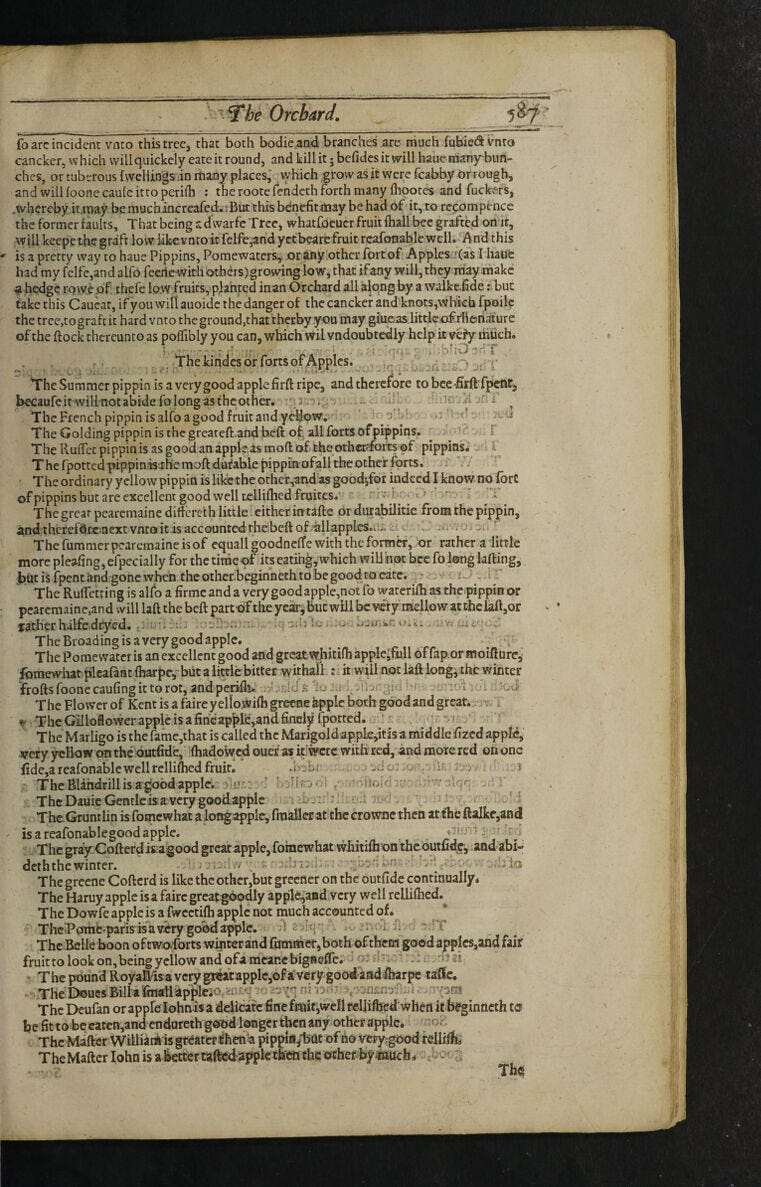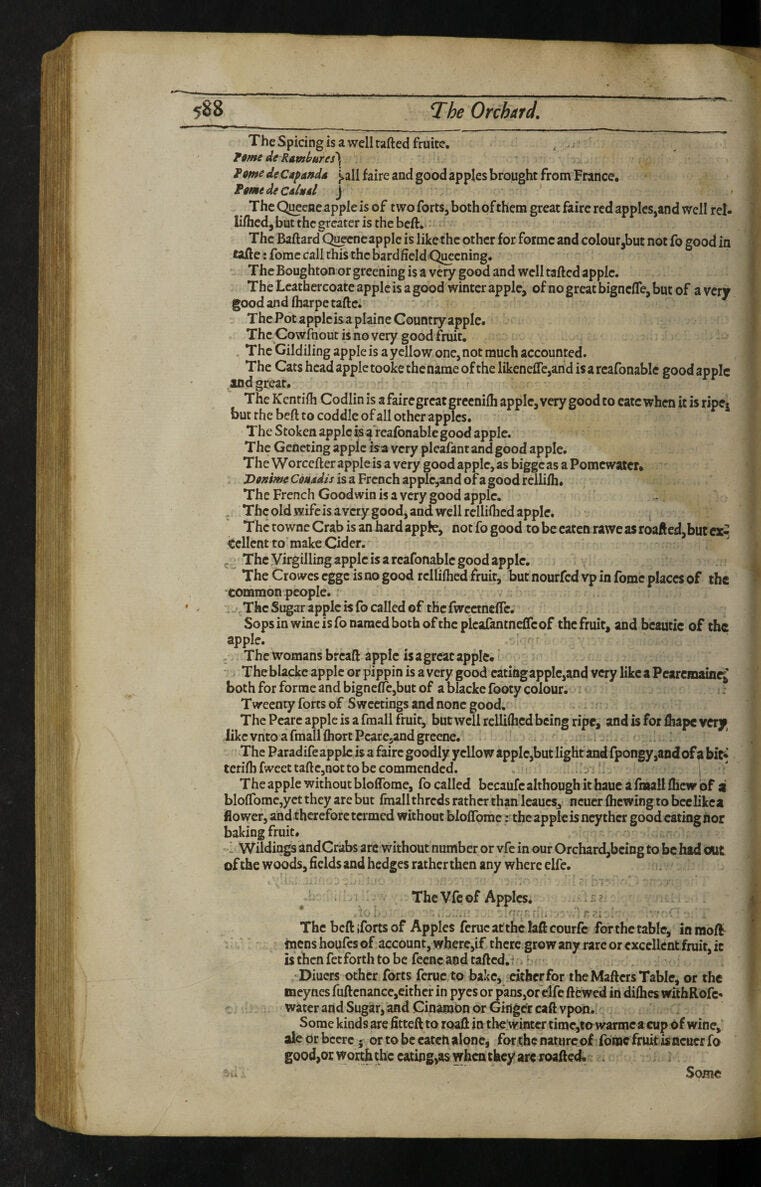Good apples
At the weekend I went to Wytham walled garden, where the plant scientist Barrie Juniper created an orchard of apple trees to use as a ‘DNA library’ in his studies. I filled my bag with apples of many sorts from the trees he’d included.
Juniper looked at the DNA of apples to see how different varieties evolved. He explains how he set the orchard up in this video:
‘What I got here were […] old apples like Shakespeare’s apple […] modern apples, like cooking apples, like cider apples, like American, French, Dutch, German apples […] and I thought we’re going to find all sorts of different things, and different sources, and in the end the whole thing turned out to be exactly the same — utterly weird. All these apples come from a single stock, in the sense that there was a single Adam and Eve apple.’
It’s a really interesting finding, that apples have a much closer relation to each other than his colleagues might have thought. And so I have been eating these apples, all different but fundamentally the same, all week.
And they made me think of a long list of apples I’d seen in a book titled Paradisi in sole paradisus terrestris, written by John Parkinson 1629.
The thing about this list is that it contains the word ‘good’ thirty-nine times, as a way of describing almost every apple. I thought this was very funny when I first read it, but now it makes me think of Juniper’s orchard and the surprising commonality he found, expecting there to be more difference, but like the words of this list, the difference was (in DNA terms) indistinguishable. These are mostly good apples, though some are also great. ‘Good’ here works like a tick, a check of passable appleishness.


